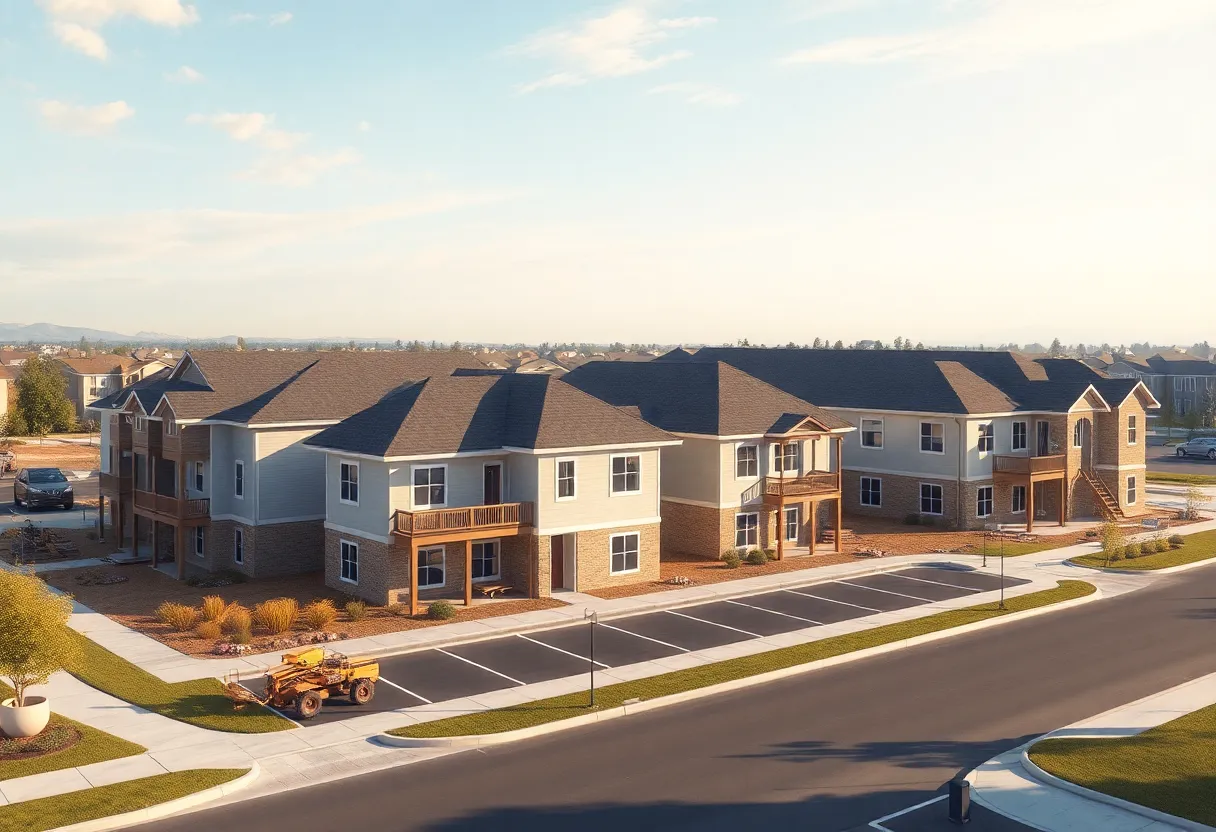United States, August 28, 2025
News Summary
New industry studies find construction firms using enterprise resource planning (ERP) software outperform peers relying on spreadsheets or standalone tools. ERP users report stronger data-driven decision-making, tighter project controls and improved crew time management. Key findings include significantly higher satisfaction and effectiveness scores for general contractors and specialty trade contractors, greater integration of external data for real-time insights, and cloud deployments lowering barriers for smaller firms. The research highlights common adoption barriers — integration complexity, training and culture — and recommends phased rollouts, sustained training and executive commitment to realize measurable operational gains.
Construction ERP studies show data-driven performance gains as ERP adoption becomes mainstream
The latest research from Dodge Construction Network and CMiC evaluates how enterprise resource planning (ERP) systems are influencing performance across general contractors and specialty trades. The studies, focusing on the value of ERP for general contractors and for specialty trade contractors, suggest that firms using ERP are advancing in data-driven decision making, project controls, and crew-time management. The findings indicate that ERP is no longer just a niche tool but a mainstream operating system for many in the construction industry.
Key findings from the Dodge/CMiC ERP studies
- General contractors using ERP are more than twice as likely to report being highly data-driven compared with those not using ERP.
- Specialty trade contractors using ERP report strong crew time management, with about 71% describing it as effective; firms relying on alternative tools report much lower levels at 43%.
- Overall adoption of ERP is linked with stronger performance across project controls, crew time management, and data-driven decision-making compared with non-ERP peers.
- ERP adoption is transitioning from early-stage use to broad deployment among both general contractors and trades, reflecting a mature stage of technology integration.
- Experience with ERP is substantial among GC users, with roughly half (53%) reporting seven or more years of ERP use, suggesting a long-term investment payoff for many firms.
- Job satisfaction with ERP is high: approximately 90% of GC ERP users report overall satisfaction, and around 80% of trade ERP users are satisfied with their systems.
- ERP users tend to rate their project controls as highly effective at a higher rate than non-users; about 79% of GC ERP users express this view, compared with a much smaller share among non-users.
- ERP users often integrate external data into their ERP functions, enhancing the system’s reach and usefulness for real-time decision making; more than half of trades also integrate external data for several functions.
- As data integration increases, so does the perceived value of ERP in delivering real-time, actionable insights, especially when information is centralized and connected across the system.
- Despite gains, many firms still rely on spreadsheets and disparate tools, which can limit ERP’s ability to support fully integrated, real-time workflows.
- Overall, ERP is associated with stronger data analytics capability, better utilization of external data, and clearer links between data and timely decisions across project controls and execution.
The studies emphasize that achieving the full value of ERP depends not only on the software itself but on a combination of integration capability, user training, and organizational commitment to making ERP the central operating system. The broader implication is that ERP is becoming a standard component of competitive construction management, not a passing trend.
Market context and broader ERP outlook
A parallel market overview places the construction ERP software market at approximately USD 3.7 billion in 2024, with a projected compound annual growth rate (CAGR) of around 7.7% from 2025 through 2034. The market is characterized by a dominant software segment—accounting for a majority share in 2024—alongside a growing cloud-based deployment that accounted for a sizable portion of the market in the same year. Cloud solutions are favored for their pricing flexibility, scalability, and remote access, which help firms manage projects across sites and teams more efficiently.
Regional dynamics highlight the United States as a leading market, with strong representation of cloud-based deployments and a large base of enterprise vendors. The market also notes significant activity among a range of ERP vendors serving construction, including those that provide industry-specific modules for accounting, cost management, procurement, scheduling, and field operations. The landscape reflects ongoing consolidation as firms seek to broaden capabilities through mergers and acquisitions, with cloud adoption and modular architectures driving rapid deployment and lower upfront costs for smaller firms.
Technology mix and implementation considerations
Industry commentary points to a broad ecosystem of digital tools increasingly used alongside ERP, including BIM, IoT sensors, AI-enabled project management, cloud collaboration platforms, and digital twins. These technologies are cited as enabling real-time planning, improved risk management, and predictive safety, while also offering avenues for better resource allocation and sustainability tracking. Adoption challenges commonly cited include upfront costs, workforce resistance to change, integration complexity with existing systems, cybersecurity risks, and the need for specialized skills. Mitigation approaches emphasize phased implementation, subscription-based models to spread costs, targeted training programs, middleware to connect disparate systems, and strong cybersecurity practices.
Vendor and advisory perspectives in the market highlight a set of leading players and the importance of a holistic, value-driven selection process. While market lists commonly reference a broad group of ERP providers, the core takeaway remains that construction firms are pursuing ERP configurations that provide scalable, integrated data across procurement, accounting, planning, and field operations, with a growing emphasis on external data integration and real-time analytics.
Operational implications for contractors
For general contractors and specialty trades, the practical takeaway is that ERP can materially enhance data-driven decision making and operational control when combined with strong data integration, robust user training, and a clear commitment to treating ERP as the central operating system. Firms that invest in long-term ERP use appear to experience tangible benefits in project controls, crew management, and the ability to make timely, data-backed choices on schedule and budget risks. As ERP ecosystems mature, the industry may see broader adoption of cloud-based architectures, real-time collaboration, and more seamless integration with external data sources and third-party tools.
Notes on interpretation
The information derives from studies focusing specifically on ERP usage in general contracting and specialty trades, as well as broader market research on ERP software for construction. While the numbers indicate clear associations between ERP use and performance improvements, they reflect self-reported metrics and market-context claims associated with industry analyses. As adoption expands, firms may tailor ERP configurations to their workflow needs, aiming for centralization, data sharing, and continuous training to sustain value realization.
Frequently Asked Questions
- What do the Dodge/CMiC ERP studies suggest about data-driven practices?
- They indicate that ERP users in construction tend to report higher levels of data-driven decision making and stronger project controls compared with peers who do not use ERP.
- How does ERP affect crew-time management for specialty trades?
- ERP users among specialty trades report higher effectiveness in crew-time management, with a majority describing it as effective, compared with a smaller share among those using other tools.
- What is the market outlook for construction ERP software?
- Market analyses place the 2024 value at several billions of dollars with a healthy CAGR into the mid-2030s, driven by cloud adoption, integrated data capabilities, and the push for real-time collaboration across sites.
- What challenges are commonly faced when adopting ERP in construction?
- Common challenges include upfront costs, training requirements, integration with legacy systems, cybersecurity risks, and the need for organizational commitment to treat ERP as a central platform.
Key features at a glance
| Feature | Description |
|---|---|
| Data-driven capability (decision making) | ERP users report higher data-driven decision making and stronger project controls than non-users. |
| Crew time management | Specialty trades using ERP show higher effectiveness in crew-time management. |
| External data integration | Many ERP users incorporate external data into ERP to broaden insights and real-time visibility. |
| Security and training considerations | Implementation requires attention to training, data security, and system integrations. |
| Market growth | Construction ERP software market is expanding with cloud-based deployments and increasing adoption. |
Deeper Dive: News & Info About This Topic
Additional Resources
- GMI Insights: Construction ERP Software Market
- Wikipedia: Enterprise resource planning
- Appinventiv: Digital transformation in construction
- Google Search: Construction ERP software
- Solutions Review: The best ERP solutions for construction companies
- Google Scholar: Construction ERP
- Deloitte: ERP selection and vendor criteria
- Encyclopedia Britannica: Enterprise resource planning
- Risk & Insurance: Workers comp, ERP changes and proactive risk mitigation
- Google News: construction ERP





